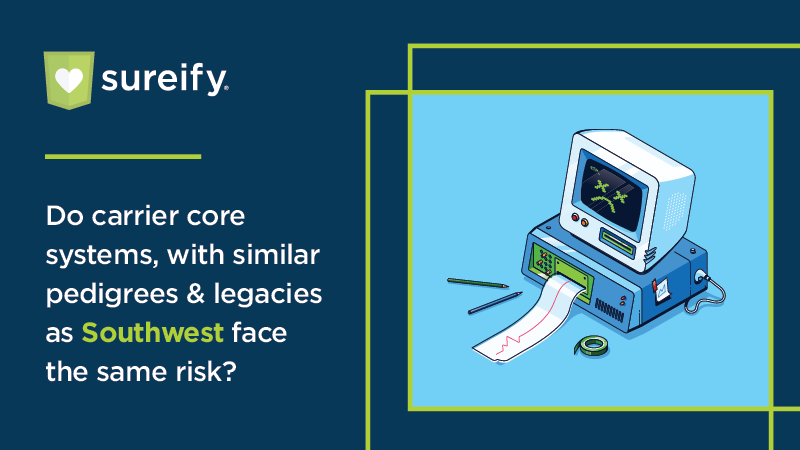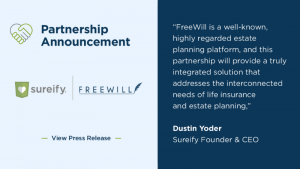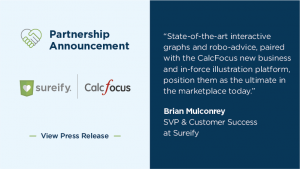In the wake of Southwest Airlines’ struggles with running their business over the winter holidays, much ink has been spilled about how this should be a warning sign for the rest of us.
Southwest put the blame squarely on software and system issues, and there’s been no shortage of piling-on from all sides. Industry pundits suggested that Southwest had a particular penchant for holding onto old systems, for choosing to defer maintenance on them, and for under-investing in shoring up critical infrastructure and adopting new solutions.
It’s certainly true that other companies in any mature space that are old enough to have legacy software with similar aging infrastructure might well be hurtling down the same path.
It really did feel like things were starting to hit a little too close to home when, for example, a journalist for the New York Times felt it necessary to expound upon the concept of technical debt in an opinion piece written for non-technical people (not just us software nerds.) I wasn’t sure whether to laugh or cry when I read this piece, but hey – now, even my mother-in-law is in on the fun.
A few of my colleagues at Sureify asked me if I’d write something on this topic. They asked me things like, “Over here in our life insurance corner of the world, what should we think about this?” “Do carrier core systems, with their similar pedigrees and legacies, create similar risks?” “Could an insurer have an acute, cascading system failure? One that leaves their customers, producers, and home office staff effectively iced out of operational access to the business for days or weeks on end? And, if so, how might we at Sureify help?”
Here’s my take: a meltdown like the one Southwest experienced seems unlikely, but the reason why, and the irony, runs deep. (Sorry, no schadenfreude for us.)
Why do I think it’s so unlikely? Because of two closely-linked reasons.
First, the core systems of record that we all rely on day to day have a spectacular track record of stability and reliability. They achieve that, in part, through a computationally induced necessity of constraint. They greatly restrict who can access these records, when they can be accessed, under what conditions they can be accessed, and for what purposes. We limit their functionality in ways that protect the transactional heart of the systems, always choosing to preserve record-keeping correctness and acceptable performance above all else.
Second, and pretty much entirely because of those imposed constraints, our customers, agents, brokers, and other external constituencies — in other words, all the humans we aim to serve through our business — have gated, highly-latent, limited access to the information that is so carefully managed within. With only a few narrow exceptions, most insurers offer very limited or no electronic access to these people on the outside. Everything is mediated by humans and via telephones, fax, and mail. These synthetic constraints, born out of underlying system limitations, fundamentally rate-limit the life insurance business processes today.
In short, (and if you’ll humor my cynical side for just a moment): life insurance customers and partners already pay the price every day for systems that can’t support them in the way they want to conduct business together. We’re slowly boiling our users out there, and that’s not sustainable in the long run.
The trouble with core record-keeping systems
Before we talk about a way out of the wilderness, let’s look more closely at three initial conditions that forged the systems we still live with every day.
(1) They were built during a time when computing resources were precious. This forced engineers to impose hard trades on capacity and functionality in exchange for the impressive reliability we’ve enjoyed over the decades. Carriers knew they could count on only a curated collection of home office users providing the primary interactive load on the systems, and the demands were expected to be stable: rate-limited by the bounds of incoming telephone and paper workloads, and largely confined to occurring during business hours. And, of course, nearly all of these systems had to go through a scheduled nightly window of downtime for reconciliation purposes – an issue we continue to reckon with even today.
(2) They were built during a time when computers were assigned ownership of data but humans still firmly owned the processes. For this reason, they do a good job with their
mission (keeping records) while falling woefully short of being able to provide computational support for the complex, higher-order work processes that naturally surround these data. Many of these valuable processes end up involving the triple cocktail of multiple humans, composition over multiple software systems, and wait time. While it was untenable to model this work in the computer in the past, software frameworks that are resilient in the face of these mixed-mode challenges have made massive strides — especially in the last few years.
(3) Last but certainly not least, they were built during a time when businesses were generally not yet concerned with what has become the defining business pivot of our time: the gradual but inexorable global shift toward people preferring to do business with others over an open, accessible, 24×7 digital computing medium — aka the internet.
A way forward
At Sureify, we help life insurers transition to digital by delivering software and frameworks that enable rich transactional capabilities on the internet “edge” — for all types of external users, including producers, agents and advisors, brokers, distributors, policyholders, and applicants alike.
We find that most life insurers in 2023 still struggle to give their outside partners and customers good options to interact electronically on their own terms. It is nearly impossible to find a life insurer with a technology stack that can answer even the most foundational, essential questions of an agent or policyholder. That includes starting with things like, “Please give me an accurate overview of the state of my business relationship with you.” Humans (or the systems those humans use) who want these kinds of answers, are generally still relegated to expensive manual processes, i.e.,phone or email.
We specialize in building software that surfaces insurance transactions and experiences on the edge in a computationally sensible way: our software pre-buffers core data and fully models over process and people, allowing our carrier customers to express their business through rich, comprehensive APIs and via consummate web and mobile experiences built atop them.
The big “secret” to our approach is to avoid putting direct technical feature pressure on the sensitive stack of record-keeping systems upon which every carrier depends (and with whom every carrier we’ve met has a love-hate relationship.) To do this well, we must ingest, model, track, buffer, orchestrate, and replay business data and events onto the back ends on each of those systems’ terms. This requires an engineered platform built for purpose, and we delight in teaching ours how to “do” life insurance your way.
It used to be true that you had to pick from among an array of poisons: painfully (and riskily) open up more direct access to core systems by exposing them on the edge, painfully (and riskily) undertake a full-on core modernization first, or choose to risk “boiling frog syndrome” by simply opting out of building support for interaction in the ways that the next generation of partners and customers will demand.
A “Southwest Moment?”
Our core systems live a privileged life in their protected, isolated, gauzy rooms of computational safety. Anything else would constitute an irrationally risky choice. And I’m convinced that the tactical safety and intrinsic latencies of these environments really do minimize the chance that a life insurer will experience an acute “Southwest Moment.”. But that sword has two sharp edges. The very same constraints raise a very different kind of longitudinal, systemic risk for life insurers who must adapt to and compete in our new economic frame.
At Sureify, we’re excited about developing a pragmatic technical approach to this problem: a platform engineered for the modern reality of doing life insurance on the internet, designed with great sensitivity to the need to flex around the challenges on the back end. If you’re interested in our approach to threading the needle in this problem space, please reach out to us. We’d love to talk with you.





